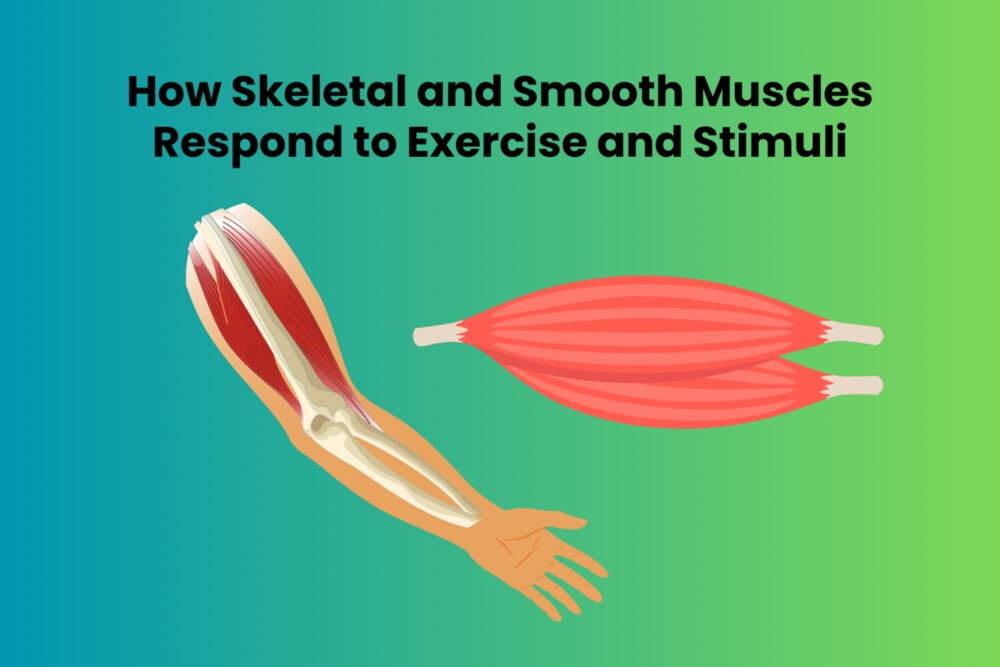Muscles are a vital part of the human body, playing a crucial role in everything from movement to the functioning of internal organs. While most people are aware of muscle types like biceps or hamstrings, fewer understand the fundamental differences between skeletal and smooth muscles, particularly in how they respond to exercise and stimuli. This article delves into the intriguing world of these muscle types, unraveling the "Difference Between Skeletal and Smooth Muscle" in their response to physical activity and various stimuli.
Understanding the Basics: Skeletal vs. Smooth Muscle
Before diving into their responses to stimuli, it’s important to understand what sets skeletal and smooth muscles apart. Skeletal muscles, also known as striated muscles, are those that most people are familiar with. They are under voluntary control, meaning we can consciously decide to move them. These muscles are attached to bones and are responsible for body movements, posture, and physical strength.
Smooth muscles, on the other hand, are involuntary muscles. They are found within the walls of internal organs like the stomach, intestines, blood vessels, and bladder. Unlike skeletal muscles, smooth muscles are not under conscious control and work automatically to manage various bodily functions such as digestion, blood flow, and regulation of internal pressures.
Response to Exercise and Physical Activity
Skeletal Muscle
When you exercise, your skeletal muscles respond in remarkable ways. Initially, there's an increase in blood flow to the active muscles, delivering more oxygen and nutrients. With regular exercise, these muscles adapt by increasing in size (hypertrophy), strength, and endurance. This is due to the growth of new muscle fibers and an increase in the size of existing ones.
Skeletal muscles also become more efficient at using energy. With regular training, they improve their ability to store glycogen (a form of energy storage) and increase the activity of mitochondria (the powerhouses of the cell). This adaptation enhances endurance and reduces fatigue during physical activities.
Smooth Muscle
The response of smooth muscles to exercise is more subtle and indirect compared to skeletal muscles. Since smooth muscles are not involved in deliberate movements, they do not grow or strengthen in the same way skeletal muscles do. However, regular physical activity can positively impact the functioning of smooth muscles.
For instance, regular exercise can improve the efficiency of the cardiovascular system, in which smooth muscles play a key role. It can lead to more relaxed and flexible blood vessels, reducing the risk of hypertension and improving blood circulation. Additionally, exercise can enhance the motility of the gastrointestinal tract, aiding in digestion and preventing issues like constipation.
Response to Other Stimuli
Skeletal Muscle
Skeletal muscles respond not only to exercise but also to other stimuli like temperature and stress. In cold temperatures, skeletal muscles can generate heat through shivering - rapid, involuntary contractions of muscle fibers. Stress, on the other hand, can lead to involuntary tightening or contraction of skeletal muscles, often leading to stiffness or muscle pain.
Smooth Muscle
Smooth muscles respond to a variety of stimuli including chemical signals, nerve impulses, and physical stretching. For example, the smooth muscles in blood vessels contract or relax in response to hormonal changes, regulating blood pressure and flow. In the digestive system, smooth muscles contract in response to the stretching caused by food presence, aiding in the process of digestion.
The Difference Between Skeletal and Smooth Muscle in Adaptability
One of the key differences in how skeletal and smooth muscles respond to stimuli is their adaptability. Skeletal muscles are highly adaptable; they can grow, change, and heal in response to the demands placed on them. This adaptability is what makes strength training and physical rehabilitation effective.
Smooth muscles, while less adaptable in terms of growth and healing, are incredibly efficient at maintaining consistent function over time. They are designed for endurance and continuous operation, often working tirelessly throughout a person’s lifetime without rest.
Conclusion
Understanding the difference between skeletal and smooth muscles in terms of their response to exercise and stimuli offers valuable insights into our body's complex workings. While skeletal muscles demonstrate remarkable adaptability and growth in response to physical activity, smooth muscles ensure the seamless operation of our internal systems, subtly influenced by our lifestyle and health choices.
Both types of muscles, though fundamentally different, are essential for our well-being. By appreciating their unique responses and functions, we can better understand how to maintain a healthy, balanced body and appreciate the intricate mechanisms that keep us moving and functioning every day.


No comments yet